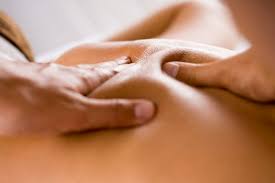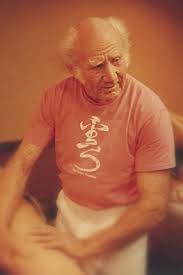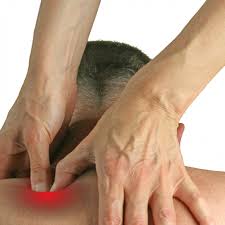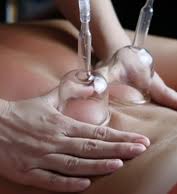Every Massage is Personally Developed Just for you –
it’s what we do.
Relaxation or Therapy
We work with you
Stress, a prevalent component in today’s fast-paced world, can negatively impact your health and well-being. Massage therapy can help you significantly reduce stress on physical and psychological levels. While massage therapists and clients know from experience that massage reduces stress, there is considerable research that validates our experience.
Massage therapy has been shown to be effective in treating chronic pain, behavioral health, rehabilitation, and acute and chronic medical conditions.
Full Body or Points of Focus
Adjusting to your needs
Frequency and Duration
a New Normal
As part of an integrative treatment plan, massage therapy can aid in healing and rehabilitation. Massage has been shown to reduce pain and muscle tension, increase flexibility and range of motion, and improve blood circulation and is beneficial in working with athletic training/injury treatment, ergonomics and job-related injuries, cardiac rehabilitation, joint replacement rehabilitation, and scar management. Massage therapy aids in the healing process by addressing the symptoms, stress, impaired quality of life, and anxiety that often accompanies the treatment of medical conditions.
Modalities Used
The term “massage therapy” includes many techniques, and the type of massage given usually depends on your needs and physical condition. There are over 250 modalities for massage. Each modality communicates differently with the body. Touch communication affects physical and emotional responses. Every body experiences each modality differently. Some of the modalities which we may use in your massage experience are listed below.
Swedish Massage
With the primary focus on overall relaxation, circulation, and physical and mental wellness. Swedish massage includes gliding, kneading, tapping, stretching, and cross-friction strokes. Swedish massage therapy goes beyond relaxation. Swedish massage is exceptionally beneficial for increasing the level of oxygen in the blood, decreasing muscle toxins, improving blood flow and flexibility while easing tension.

Deep Tissue Massage
Deep tissue massage stretches out the fascia, the connective tissue covering muscles, allowing therapists to directly affect long-standing muscle knots and trigger points. If you’re suffering from muscle tension or aches a deep tissue massage may be for you. When you have specific back, shoulder, leg, knee, muscle or neck pain, deep tissue massage can help.

Therapeutic /medical massage
Massage has been used as a medical treatment dating back to the Chinese over 5000 years ago. Medical massage is outcome-based massage, primarily the application of a specific treatment targeted to the specific problem(s) the patient presents. With a diagnosis by a primary health care provider and after assessment and evaluation by the massage therapist specific outcomes are determined and are the basis for the massage treatment sessions. Medical massage is also known as clinical massage or therapeutic massage. In a medical massage session the therapist may apply numerous modalities and techniques in order to bring about the outcomes.

Trager Techniques
The Trager approach is a form of somatic education that helps release deep-seated physical and mental patterns and facilitates deep relaxation, increased physical mobility, and mental clarity. The founder, Milton Trager, called his work Psychophysical Integration. The therapist uses gentle touch, rocking and a combination of passive and active movement with the intent of teaching the recipient how to move with less effort. The contact is gentle but deep. It may be quite firm but is without strain or resistance. Trager techniques avoid causing pain, and attempt to contact the body in a way that allows the mind to become aware of unnecessary resistance resulting in an increase range of motion.

Trigger Point Therapy
A trigger point is a tight area within muscle tissue that causes pain in other parts of the body. A trigger point in the back, for example, may produce referral pain in the neck. The pain may be sharp and intense or a dull ache. Trigger point therapy is designed to ease the tension in the muscle and alleviate the source of the pain through cycles of deep pressure and release. When applied appropriately trigger point therapy results in releasing constricted areas in the muscles and relieving or eliminating the pain. You can experience a significant decrease in pain after just one treatment. Receiving massage with trigger point therapy on a regular basis can help naturally manage pain and stress from chronic injuries.

Negative Pressure /Decompression Massage or Cupping
Negative pressure massage feels great. Rather than tissue compression as in other modalities body tissue is lifted using cups and suction. The pulling action engages the parasympathetic nervous system, allowing a deep relaxation to move through the body. In decompression massage a cup is positioned over the treatment area and a vacuum is created by reducing the pressure inside the cup. The underlying tissue is lifted allowing for movement in the tissue, the release of tension in the muscles and the elimination of metabolic waste while encouraging the circulation of fresh, revitalized blood and nutrients. When cupping is given in a treatment series, the results are cumulative. But even a single treatment may resolve chronic issues.

chair massage
A chair massage is a shoulder, neck, and upper back massage that takes place while the client is fully clothed and seated in a specially designed chair. The massage might also include the arms and hands and part of the lower back. This type of massage generally does not manipulate muscles deeply like a full-body massage, but it is designed to relax the mind and muscles and improve flexibility and movement. Chair massage provides relief from stress and is faster and more convenient than other modalities